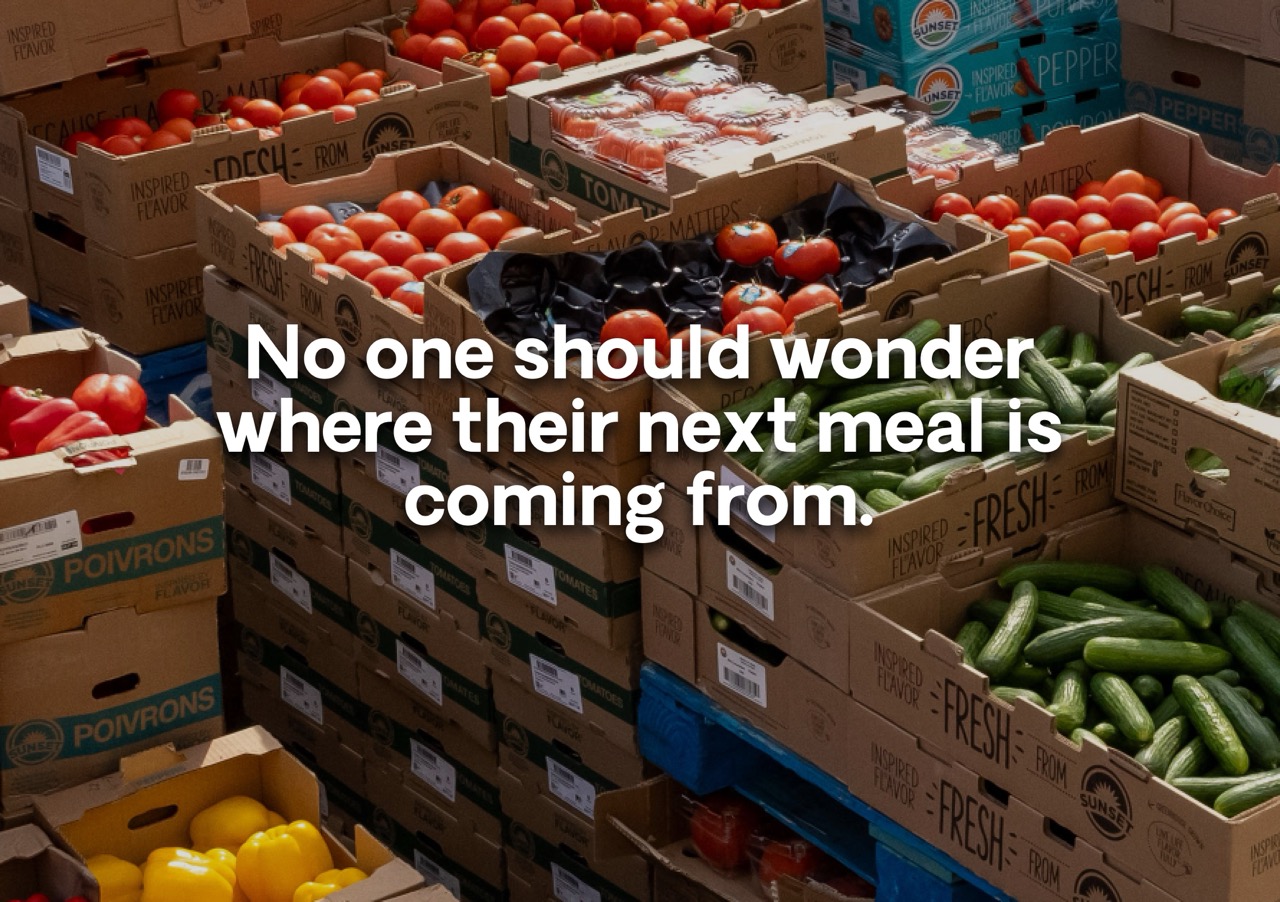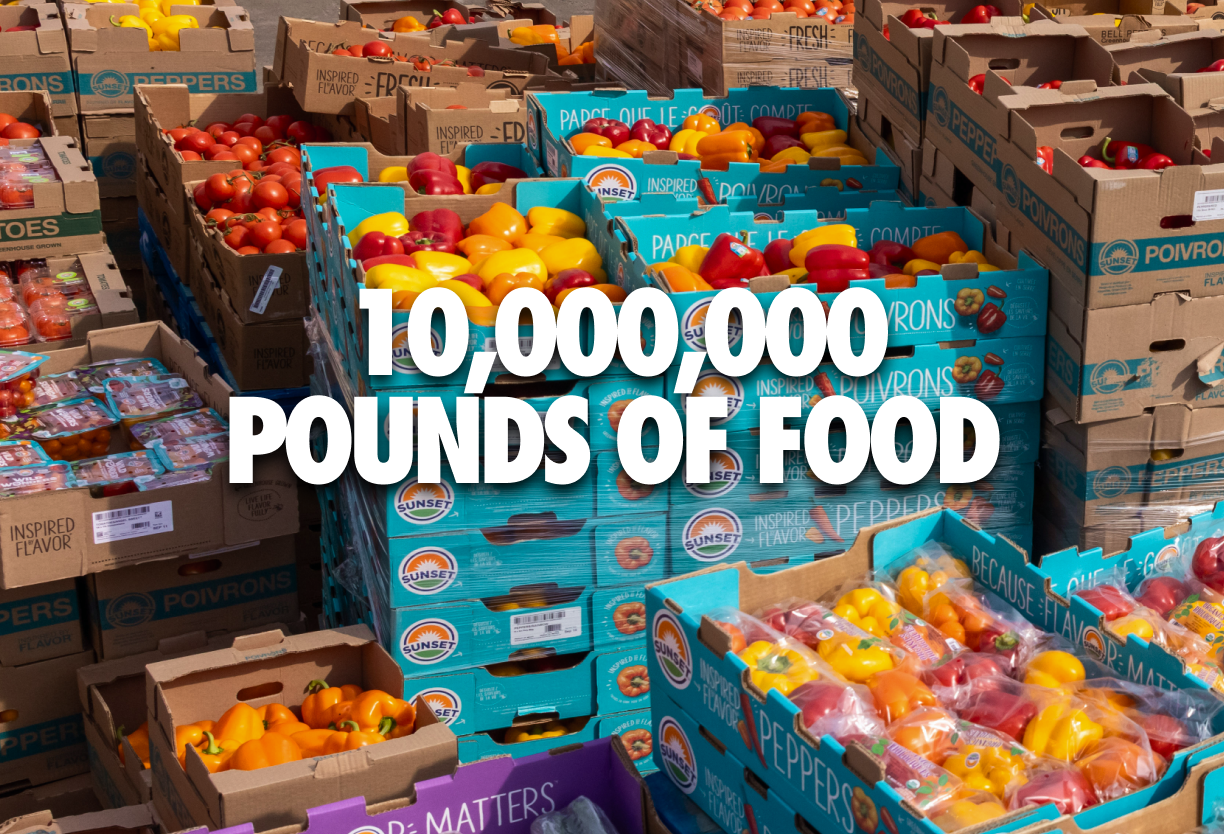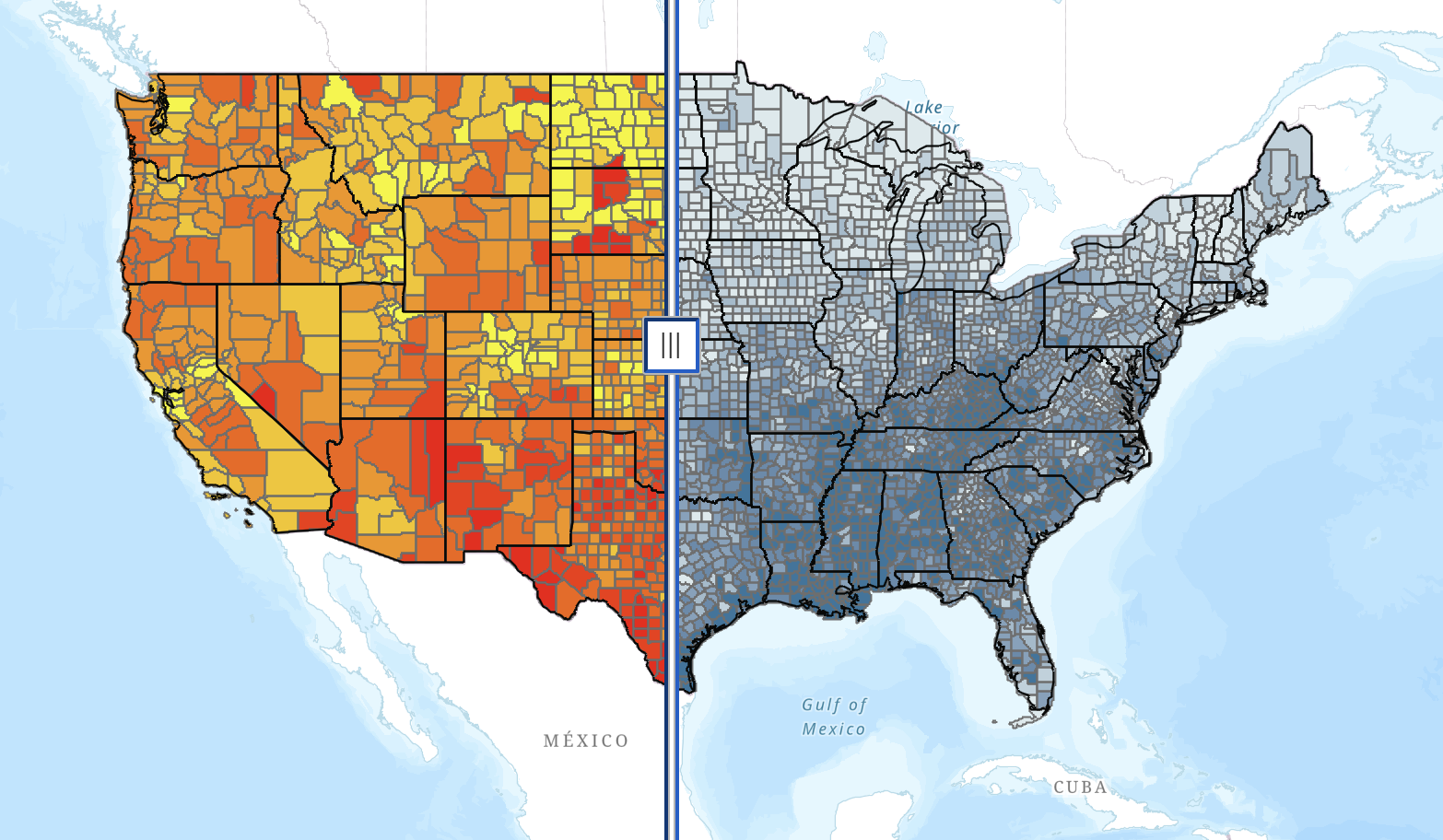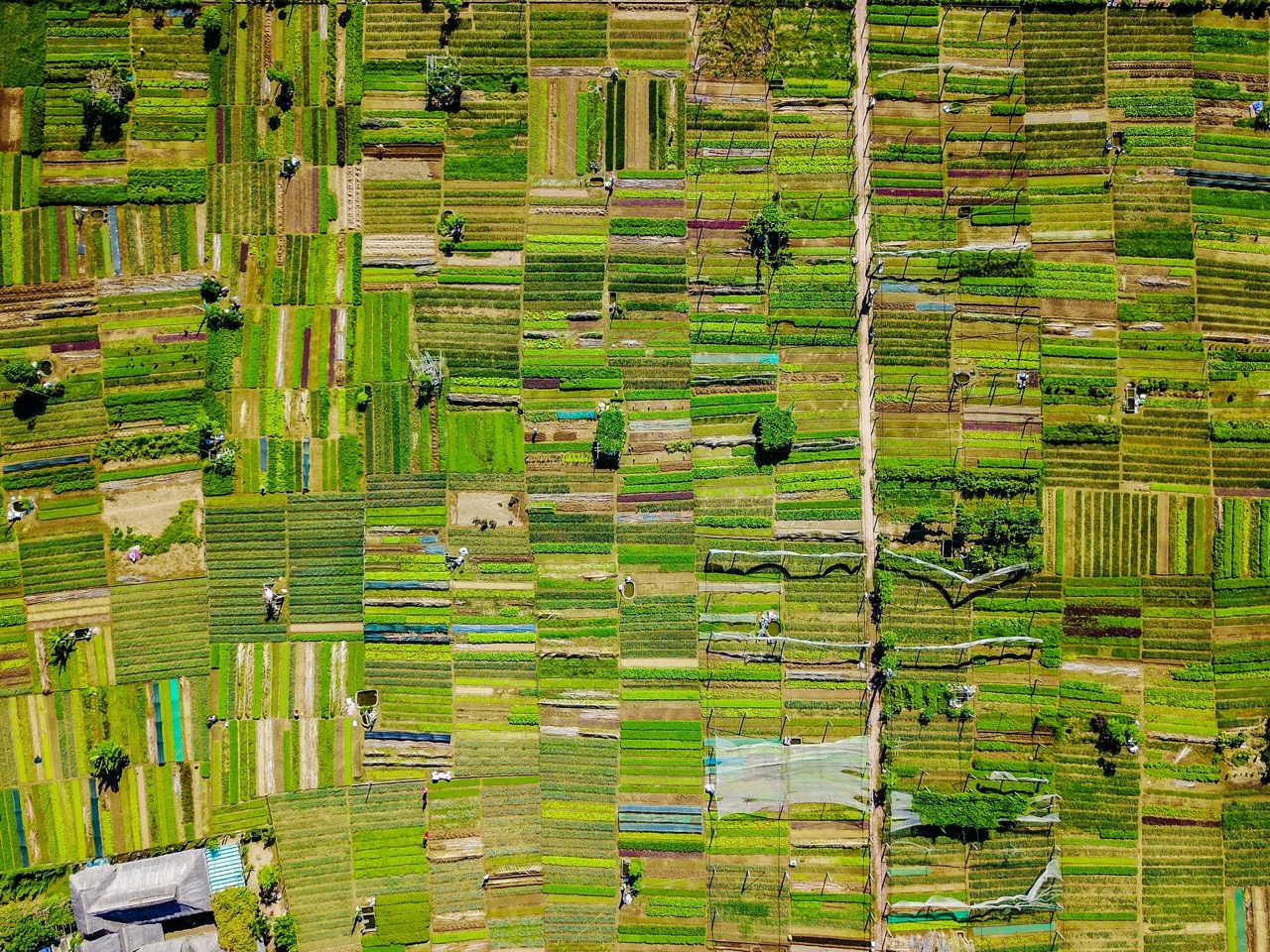“If you’re not growing, you’re at risk. Our growth allows us to do more for our customers and our employees, and the opportunity to give back more.”
Have you ever wondered what it would be like to work with generations of family members at a farm? Briana Giampaoli, as a fourth-generation member of the Live Oak Farms family in Le Grand, California, knows the answer. She leads the marketing department at the farm, but as with any farm, tends to “wear multiple hats ” carrying out tasks that are “a little bit of everything.” She said that her role changes on a day-to-day basis and will do anything from marketing work to “training quality control.” When I spoke with Briana on August 5th, I chuckled when I asked her about what led her to her career. To my surprise, she described how her family had told her growing up, “you have a choice...you don’t have to do this.” She made the independent decision to return to Live Oak and work for her family’s farm after attending college and holding other positions. Throughout our conversation, Briana’s respect for and commitment to Live Oak Farms shone through.
Briana’s great grandfather and three of his Italian immigrant family members established Live Oak Farms 91 years ago in 1929. Briana described it as a “medium-sized farm,” and explained that there are farmers throughout California as well as many at the hub of Live Oak Farms in Le Grand, CA. Live Oak Farms, a “vertically integrated” farm, “grows, packs, and ships” their produce, according to Briana. The farm grows round and Roma tomatoes, green, red and yellow bell peppers, jalapeno peppers and more recently organic green bell peppers. Briana said that the farm is experiencing a “transitional time” and is expanding. They want to “bring new commodities, technology, innovation, and minds into the company.” Sustainability is at the core of this expansion. She also emphasized how teamwork is integral to making this happen: “[We want to] push the envelope to see what we can do if we work together.” She sounded cautiously optimistic, knowing all too well the many difficulties farmers face.
“It’s a business...there are constant challenges and hurdles we have to overcome,” Briana said. Even before the Covid-19 pandemic, Briana observed many obstacles that affected Live Oak Farms. One of these ongoing challenges is competition with Mexico, as “produce from Mexico is coming in at low prices,” according to Briana. Another consistent issue is water shortages. She recalled previous drought years, and the toll it took on the farm of having limited water resources. An additional problem is a “decrease in farm labor,” which stems from younger generations, as opposed to older ones, choosing other occupations instead of working in the agricultural sector. Briana, however, passionately advocated against this mindset: “There are lots of opportunities to be something or someone in the ag community.” Briana, embodying a marketing mentality, believes that farms can “do a better job of getting the word out.”
Farms have been in the news quite a bit since the beginning of the pandemic. Many have seen a huge surplus in food, so I was shocked when Briana told me that Live Oak Farms did not experience a surplus of produce. She attributed this lack of surplus to the fact that “a lot of people eat at home now.” Briana said that she knew of farms that had surpluses. She said that “when the pandemic first hit, we weren’t heavy into our season yet, which worked to our favor. We were harvesting but not the volume of our summer months.” They still were affected by Covid-19, however. Briana explained that, “what changed was protocol and procedures for employees and how they harvest and pack.” She shouted out the food safety personnel at the farm, describing how they implemented temperature check procedures, the requirement to wear a mask, and guidance not to work if employees were feeling sick. She said that these were “quick changes” and that everyone worked together to ensure safety at Live Oak Farms. So how exactly did Live Oak Farms avoid a surplus of food? Did they maintain their customer base and continued providing produce to them? The answer: no. According to Briana,
“We did see a big decline in our food service customers. We had to strategize and find new buyers to purchase our produce. But our sales team did a phenomenal job for the company during this pandemic.”
Yet, even without a surplus, Live Oak still decided to work with The Farmlink Project. Briana expressed how pleased she was that The Farmlink Project “linked up with us to get [the produce] to food banks.” What is the produce in question? Thus far, The Farmlink Project has facilitated the delivery of 47,600 lbs total of bell peppers to three food banks in California from Live Oak Farms. Briana’s coworker, Matt, worked with The Farmlink Project to make this happen. Briana conveyed that she was, “happy to see a group of smart individuals applying for grant programs.” She said that farmers want to apply for these grant programs but lack the time to identify them. She said that this is a “step in the right direction.”

Briana is dedicated to the growth and prosperity of Live Oak Farms. When I asked her what she enjoys about her line of work, she said “the people, the farm laborers.” She emphasized “how hard they work” and how she “wants to give back to them.” Live Oak Farms is “committed to excellence.” Throughout my conversation with Briana, this philosophy rang true through her statements. She feels “pride in giving consumers the best, the safest.” She said that it is “rewarding” to provide nutritious produce to customers. Briana appreciates the cooperation and teamwork between each person at Live Oak Farms, with everyone working to “see a better company to bring better produce to the people.” The final question I asked Briana in our conversation was to describe a scene of her vision for the future. She confidently stated that her family and Live Oak Farms employees want to “grow the company to meet the demands of a changing marketplace.” This includes expanding the types of produce they sell. According to Briana, “If you’re not growing, you’re at risk. Our growth allows us to do more for our customers and our employees, and the opportunity to give back more.” Briana indicated how it is important to her that Live Oak Farms continue to be a family farm. She also hopes that Live Oak Farms can pursue more partnerships with organizations like The Farmlink Project in order to “give what we get.” Talk about a sustainable, humane approach to farming.
< Back
“If you’re not growing, you’re at risk. Our growth allows us to do more for our customers and our employees, and the opportunity to give back more.”
Have you ever wondered what it would be like to work with generations of family members at a farm? Briana Giampaoli, as a fourth-generation member of the Live Oak Farms family in Le Grand, California, knows the answer. She leads the marketing department at the farm, but as with any farm, tends to “wear multiple hats ” carrying out tasks that are “a little bit of everything.” She said that her role changes on a day-to-day basis and will do anything from marketing work to “training quality control.” When I spoke with Briana on August 5th, I chuckled when I asked her about what led her to her career. To my surprise, she described how her family had told her growing up, “you have a choice...you don’t have to do this.” She made the independent decision to return to Live Oak and work for her family’s farm after attending college and holding other positions. Throughout our conversation, Briana’s respect for and commitment to Live Oak Farms shone through.
Briana’s great grandfather and three of his Italian immigrant family members established Live Oak Farms 91 years ago in 1929. Briana described it as a “medium-sized farm,” and explained that there are farmers throughout California as well as many at the hub of Live Oak Farms in Le Grand, CA. Live Oak Farms, a “vertically integrated” farm, “grows, packs, and ships” their produce, according to Briana. The farm grows round and Roma tomatoes, green, red and yellow bell peppers, jalapeno peppers and more recently organic green bell peppers. Briana said that the farm is experiencing a “transitional time” and is expanding. They want to “bring new commodities, technology, innovation, and minds into the company.” Sustainability is at the core of this expansion. She also emphasized how teamwork is integral to making this happen: “[We want to] push the envelope to see what we can do if we work together.” She sounded cautiously optimistic, knowing all too well the many difficulties farmers face.
“It’s a business...there are constant challenges and hurdles we have to overcome,” Briana said. Even before the Covid-19 pandemic, Briana observed many obstacles that affected Live Oak Farms. One of these ongoing challenges is competition with Mexico, as “produce from Mexico is coming in at low prices,” according to Briana. Another consistent issue is water shortages. She recalled previous drought years, and the toll it took on the farm of having limited water resources. An additional problem is a “decrease in farm labor,” which stems from younger generations, as opposed to older ones, choosing other occupations instead of working in the agricultural sector. Briana, however, passionately advocated against this mindset: “There are lots of opportunities to be something or someone in the ag community.” Briana, embodying a marketing mentality, believes that farms can “do a better job of getting the word out.”
Farms have been in the news quite a bit since the beginning of the pandemic. Many have seen a huge surplus in food, so I was shocked when Briana told me that Live Oak Farms did not experience a surplus of produce. She attributed this lack of surplus to the fact that “a lot of people eat at home now.” Briana said that she knew of farms that had surpluses. She said that “when the pandemic first hit, we weren’t heavy into our season yet, which worked to our favor. We were harvesting but not the volume of our summer months.” They still were affected by Covid-19, however. Briana explained that, “what changed was protocol and procedures for employees and how they harvest and pack.” She shouted out the food safety personnel at the farm, describing how they implemented temperature check procedures, the requirement to wear a mask, and guidance not to work if employees were feeling sick. She said that these were “quick changes” and that everyone worked together to ensure safety at Live Oak Farms. So how exactly did Live Oak Farms avoid a surplus of food? Did they maintain their customer base and continued providing produce to them? The answer: no. According to Briana,
“We did see a big decline in our food service customers. We had to strategize and find new buyers to purchase our produce. But our sales team did a phenomenal job for the company during this pandemic.”
Yet, even without a surplus, Live Oak still decided to work with The Farmlink Project. Briana expressed how pleased she was that The Farmlink Project “linked up with us to get [the produce] to food banks.” What is the produce in question? Thus far, The Farmlink Project has facilitated the delivery of 47,600 lbs total of bell peppers to three food banks in California from Live Oak Farms. Briana’s coworker, Matt, worked with The Farmlink Project to make this happen. Briana conveyed that she was, “happy to see a group of smart individuals applying for grant programs.” She said that farmers want to apply for these grant programs but lack the time to identify them. She said that this is a “step in the right direction.”

Briana is dedicated to the growth and prosperity of Live Oak Farms. When I asked her what she enjoys about her line of work, she said “the people, the farm laborers.” She emphasized “how hard they work” and how she “wants to give back to them.” Live Oak Farms is “committed to excellence.” Throughout my conversation with Briana, this philosophy rang true through her statements. She feels “pride in giving consumers the best, the safest.” She said that it is “rewarding” to provide nutritious produce to customers. Briana appreciates the cooperation and teamwork between each person at Live Oak Farms, with everyone working to “see a better company to bring better produce to the people.” The final question I asked Briana in our conversation was to describe a scene of her vision for the future. She confidently stated that her family and Live Oak Farms employees want to “grow the company to meet the demands of a changing marketplace.” This includes expanding the types of produce they sell. According to Briana, “If you’re not growing, you’re at risk. Our growth allows us to do more for our customers and our employees, and the opportunity to give back more.” Briana indicated how it is important to her that Live Oak Farms continue to be a family farm. She also hopes that Live Oak Farms can pursue more partnerships with organizations like The Farmlink Project in order to “give what we get.” Talk about a sustainable, humane approach to farming.
Briana Giampaoli
Fourth Generation Farmer at Live Oak Farms
“If you’re not growing, you’re at risk. Our growth allows us to do more for our customers and our employees, and the opportunity to give back more.”
Have you ever wondered what it would be like to work with generations of family members at a farm? Briana Giampaoli, as a fourth-generation member of the Live Oak Farms family in Le Grand, California, knows the answer. She leads the marketing department at the farm, but as with any farm, tends to “wear multiple hats ” carrying out tasks that are “a little bit of everything.” She said that her role changes on a day-to-day basis and will do anything from marketing work to “training quality control.” When I spoke with Briana on August 5th, I chuckled when I asked her about what led her to her career. To my surprise, she described how her family had told her growing up, “you have a choice...you don’t have to do this.” She made the independent decision to return to Live Oak and work for her family’s farm after attending college and holding other positions. Throughout our conversation, Briana’s respect for and commitment to Live Oak Farms shone through.
Briana’s great grandfather and three of his Italian immigrant family members established Live Oak Farms 91 years ago in 1929. Briana described it as a “medium-sized farm,” and explained that there are farmers throughout California as well as many at the hub of Live Oak Farms in Le Grand, CA. Live Oak Farms, a “vertically integrated” farm, “grows, packs, and ships” their produce, according to Briana. The farm grows round and Roma tomatoes, green, red and yellow bell peppers, jalapeno peppers and more recently organic green bell peppers. Briana said that the farm is experiencing a “transitional time” and is expanding. They want to “bring new commodities, technology, innovation, and minds into the company.” Sustainability is at the core of this expansion. She also emphasized how teamwork is integral to making this happen: “[We want to] push the envelope to see what we can do if we work together.” She sounded cautiously optimistic, knowing all too well the many difficulties farmers face.
“It’s a business...there are constant challenges and hurdles we have to overcome,” Briana said. Even before the Covid-19 pandemic, Briana observed many obstacles that affected Live Oak Farms. One of these ongoing challenges is competition with Mexico, as “produce from Mexico is coming in at low prices,” according to Briana. Another consistent issue is water shortages. She recalled previous drought years, and the toll it took on the farm of having limited water resources. An additional problem is a “decrease in farm labor,” which stems from younger generations, as opposed to older ones, choosing other occupations instead of working in the agricultural sector. Briana, however, passionately advocated against this mindset: “There are lots of opportunities to be something or someone in the ag community.” Briana, embodying a marketing mentality, believes that farms can “do a better job of getting the word out.”
Farms have been in the news quite a bit since the beginning of the pandemic. Many have seen a huge surplus in food, so I was shocked when Briana told me that Live Oak Farms did not experience a surplus of produce. She attributed this lack of surplus to the fact that “a lot of people eat at home now.” Briana said that she knew of farms that had surpluses. She said that “when the pandemic first hit, we weren’t heavy into our season yet, which worked to our favor. We were harvesting but not the volume of our summer months.” They still were affected by Covid-19, however. Briana explained that, “what changed was protocol and procedures for employees and how they harvest and pack.” She shouted out the food safety personnel at the farm, describing how they implemented temperature check procedures, the requirement to wear a mask, and guidance not to work if employees were feeling sick. She said that these were “quick changes” and that everyone worked together to ensure safety at Live Oak Farms. So how exactly did Live Oak Farms avoid a surplus of food? Did they maintain their customer base and continued providing produce to them? The answer: no. According to Briana,
“We did see a big decline in our food service customers. We had to strategize and find new buyers to purchase our produce. But our sales team did a phenomenal job for the company during this pandemic.”
Yet, even without a surplus, Live Oak still decided to work with The Farmlink Project. Briana expressed how pleased she was that The Farmlink Project “linked up with us to get [the produce] to food banks.” What is the produce in question? Thus far, The Farmlink Project has facilitated the delivery of 47,600 lbs total of bell peppers to three food banks in California from Live Oak Farms. Briana’s coworker, Matt, worked with The Farmlink Project to make this happen. Briana conveyed that she was, “happy to see a group of smart individuals applying for grant programs.” She said that farmers want to apply for these grant programs but lack the time to identify them. She said that this is a “step in the right direction.”

Briana is dedicated to the growth and prosperity of Live Oak Farms. When I asked her what she enjoys about her line of work, she said “the people, the farm laborers.” She emphasized “how hard they work” and how she “wants to give back to them.” Live Oak Farms is “committed to excellence.” Throughout my conversation with Briana, this philosophy rang true through her statements. She feels “pride in giving consumers the best, the safest.” She said that it is “rewarding” to provide nutritious produce to customers. Briana appreciates the cooperation and teamwork between each person at Live Oak Farms, with everyone working to “see a better company to bring better produce to the people.” The final question I asked Briana in our conversation was to describe a scene of her vision for the future. She confidently stated that her family and Live Oak Farms employees want to “grow the company to meet the demands of a changing marketplace.” This includes expanding the types of produce they sell. According to Briana, “If you’re not growing, you’re at risk. Our growth allows us to do more for our customers and our employees, and the opportunity to give back more.” Briana indicated how it is important to her that Live Oak Farms continue to be a family farm. She also hopes that Live Oak Farms can pursue more partnerships with organizations like The Farmlink Project in order to “give what we get.” Talk about a sustainable, humane approach to farming.
.png)








.svg)
.svg)
.svg)